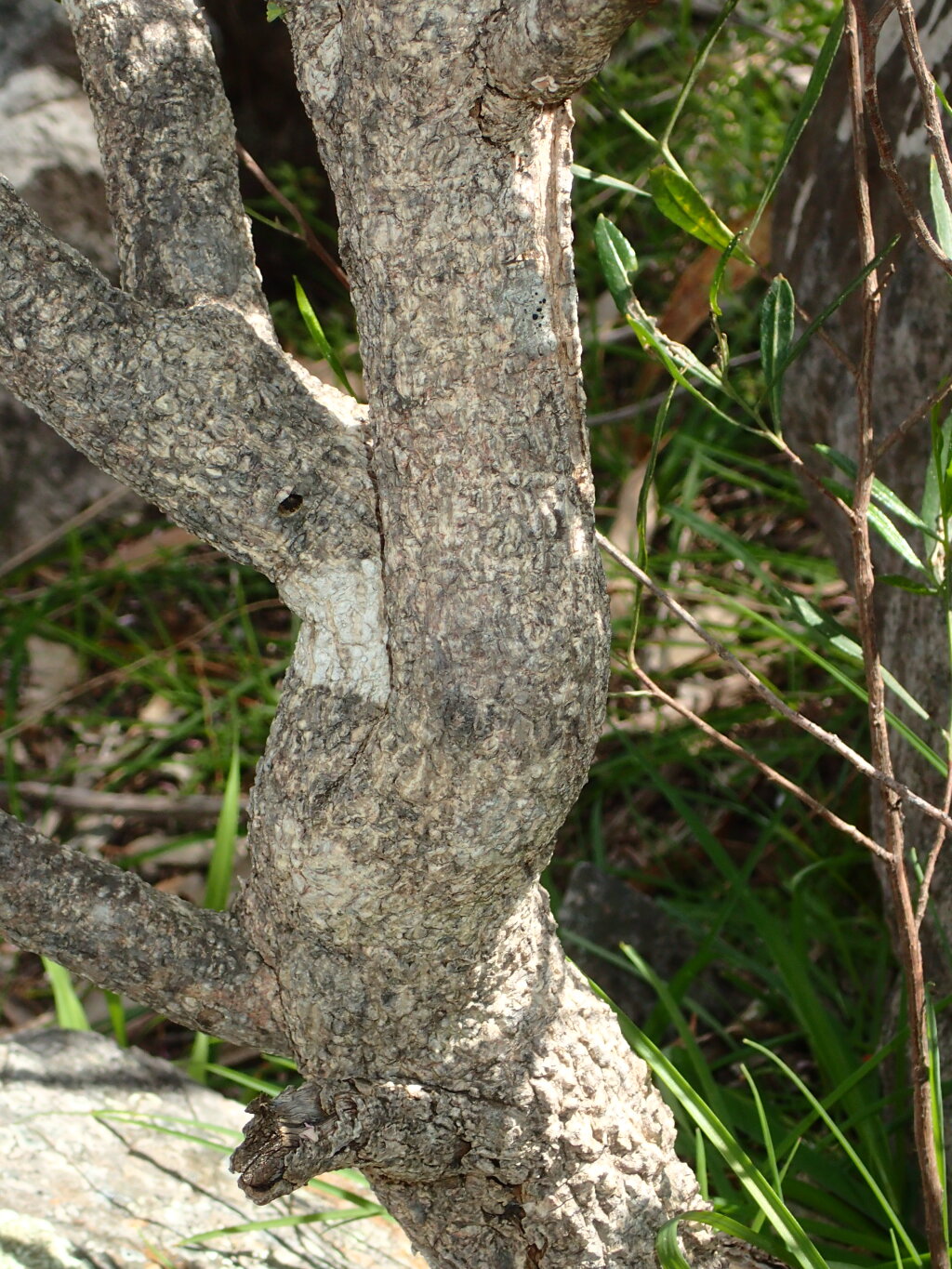Philotheca verrucosa
(A.Rich.) Paul G.WilsonShrub or subshrub to c. 80 cm high; branchlets glabrous, with many prominent oil glands, lacking dark, stipule-like excrescences. Leaves narrowly to broadly obcordate, 6–15 mm long, 4–7 mm wide, leathery, more or less concolorous, smooth above, prominently glandular-verrucose below, margins thick. Inflorescences axillary, 1–3-flowered; pedicels borne on a common peduncle. Flowers 5-merous; sepals suborbicular, c. 1 mm long; petals elliptic, c. 6 mm long, white (pink in bud), glabrous (but often papillose within), not persisting in fruit; anthers with two prominent glands beneath white apiculum; ovary glabrous, carpels free for most of their length. Follicles prominently beaked, c. 6 mm long; seed flattened-ellipsoid, c. 4.5 mm long. Flowers mostly Aug.–Oct.
LoM, Wim, VVP, VRiv, MuF, GipP, Gold, CVU, GGr, HSF. Mostly on shallow, often rocky soils in open-forest or woodlands of the central goldfields (Bendigo, Castlemaine areas) and Grampians, but occasionally in heathlands and mallee on sand (e.g. Little Desert).
A range of floral abnormalities occur in wild populations of E. verrucosus. Generally, these involve extra whorls of floral organs (especially petals), and several of these 'double-flowered' forms (originally sourced from around Bendigo or Heyfield) are commonly cultivated (Elliot & Jones 1984). Cookson (1921), described plants from near Castlemaine in which the petals bore pollen-producing anthers, and mentioned a single specimen with 6-merous, but otherwise regular, flowers.
Bayly, M.J. (1999). Eriostemon. In: Walsh, N.G.; Entwisle, T.J., Flora of Victoria Vol. 4, Cornaceae to Asteraceae, pp. 178–183. Inkata Press, Melbourne.
 Spinning
Spinning

